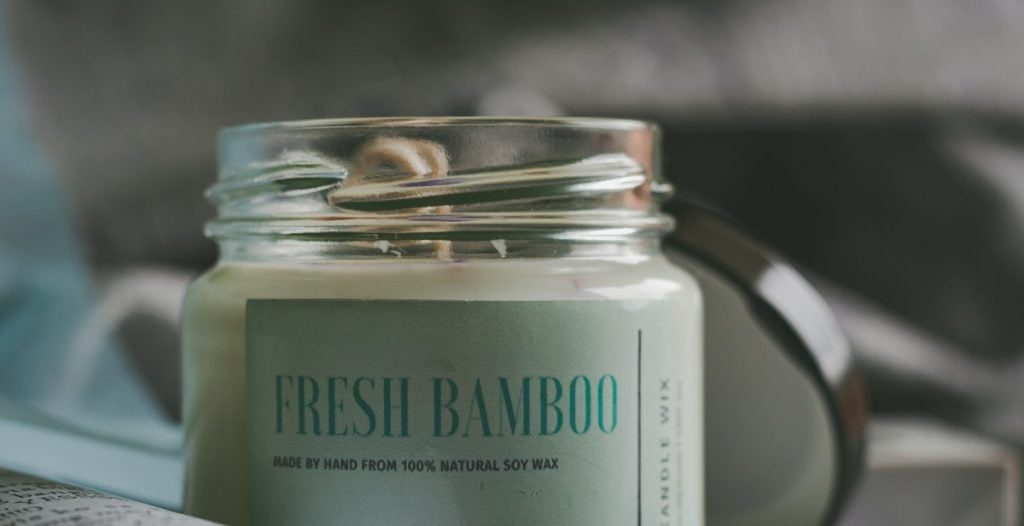Introduction
Candles have been used for centuries to provide light and fragrance to homes and other spaces. However, sometimes candles may not provide the desired fragrance throw or scent diffusion, which can be frustrating for candle makers and users alike. The good news is that troubleshooting these issues is not difficult and can often be resolved with simple adjustments.
What is fragrance throw?
Fragrance throw refers to the strength of the scent that is released from the candle when it is burning. A candle with good fragrance throw will release a strong and pleasant aroma, while a candle with poor fragrance throw may not release much scent at all.
What is scent diffusion?
Scent diffusion refers to how far the scent of the candle travels and fills the room. A candle with good scent diffusion will fill the room with the desired fragrance, while a candle with poor scent diffusion may only provide a faint scent in a small area.
Common issues with fragrance throw and scent diffusion
- Candle wax is not properly melted or poured at the right temperature
- Incorrect amount or type of fragrance oil used
- Wrong wick size or type
- Candle is not burned for long enough periods of time
By understanding these common issues, candle makers and users can troubleshoot and adjust their candles to achieve the desired fragrance throw and scent diffusion.
Understanding Fragrance Throw and Scent Diffusion
Fragrance throw and scent diffusion are important factors to consider when making candles. These two terms are often used interchangeably, but they refer to different aspects of a candle’s scent performance.
What is Fragrance Throw?
Fragrance throw refers to the strength of a candle’s scent when it is burning. A candle with good fragrance throw will fill a room with its scent, while a candle with poor fragrance throw will only emit a weak scent, even when it is burning for a long time.
There are several factors that can affect a candle’s fragrance throw, including:
- The quality and concentration of the fragrance oil used
- The type and amount of wax used
- The size and shape of the candle
- The wick used
- The burning conditions (e.g. drafty room, size of the room, etc.)
When troubleshooting fragrance throw issues, it’s important to consider all of these factors and make adjustments as necessary.
What is Scent Diffusion?
Scent diffusion refers to the way a candle’s scent is distributed throughout a room. A candle with good scent diffusion will evenly distribute its scent throughout a room, while a candle with poor scent diffusion may only emit its scent in certain areas of a room.
Factors that can affect a candle’s scent diffusion include:
- The size and shape of the room
- The placement of the candle in the room
- The type and amount of wax used
- The quality and concentration of the fragrance oil used
- The burning conditions (e.g. drafty room, size of the room, etc.)
When troubleshooting scent diffusion issues, it’s important to consider these factors and make adjustments as necessary.
Conclusion
In conclusion, fragrance throw and scent diffusion are important factors to consider when making candles. By understanding these terms and the factors that can affect them, candle makers can troubleshoot fragrance throw and scent diffusion issues and create candles that have a strong, even scent throughout a room.

Common Issues with Fragrance Throw and Scent Diffusion
While candles are a great way to add a pleasant aroma to your space, there are times when your candle may not be performing as expected. Some of the common issues with fragrance throw and scent diffusion in candles include:
Low Fragrance Throw
If your candle has a low fragrance throw, it means that the scent is not strong enough to fill the room. There are several reasons why this may be happening:
- Using too little fragrance oil: Make sure you are using the recommended amount of fragrance oil for your candle wax. Using too little fragrance oil can result in a weak scent.
- Poor quality fragrance oil: Low-quality fragrance oil may not have enough scent to create a strong fragrance throw. Always use high-quality fragrance oils from reputable suppliers.
- Inadequate curing time: Curing time is the time it takes for the fragrance to fully bind with the wax. If you do not allow enough curing time, the scent may not be strong enough.
- Incorrect wick size: Using the wrong wick size can cause poor scent diffusion. A wick that is too small may not create enough heat to release the fragrance, while a wick that is too large may cause the candle to burn too quickly, resulting in a weak scent.
Uneven Fragrance Throw
If your candle has an uneven fragrance throw, it means that the scent is not consistent throughout the room. This can be caused by several factors:
- Uneven wax distribution: If the wax is not distributed evenly, the scent may be stronger in some areas than others.
- Improper wick trimming: If the wick is not trimmed properly, the flame may burn too high, causing the wax to melt unevenly and resulting in an uneven scent throw.
- Poor air circulation: Poor air circulation can cause the scent to become trapped in one area of the room, resulting in an uneven fragrance throw.
Intense Fragrance Throw
If your candle has an intense fragrance throw, it means that the scent is too strong and overpowering. This can be caused by several factors:
- Using too much fragrance oil: Using too much fragrance oil can result in an intense scent that is overpowering.
- Using a fragrance oil with a high flashpoint: Fragrance oils with a high flashpoint may require a higher temperature to release the scent, resulting in an intense fragrance throw.
- Using a wick that is too large: A wick that is too large can cause the candle to burn too quickly, resulting in an intense fragrance throw.
| Issue | Cause |
|---|---|
| Low fragrance throw | Using too little fragrance oil, poor quality fragrance oil, inadequate curing time, incorrect wick size |
| Uneven fragrance throw | Uneven wax distribution, improper wick trimming, poor air circulation |
| Intense fragrance throw | Using too much fragrance oil, using a fragrance oil with a high flashpoint, using a wick that is too large |

Troubleshooting Techniques for Fragrance Throw and Scent Diffusion Issues
Creating candles that have a strong and consistent fragrance throw can be a challenge, even for experienced candle makers. However, there are several techniques you can use to troubleshoot scent diffusion issues and improve the fragrance throw of your candles. Here are some of the most effective techniques:
Use the Right Amount of Fragrance Oil
One of the most common reasons for fragrance throw issues is using too little or too much fragrance oil. If you use too little, the scent may be too weak and barely noticeable. On the other hand, if you use too much, the fragrance may be overpowering and unpleasant. To ensure the right amount of fragrance oil, always follow the manufacturer’s recommended usage rates.
Choose the Right Type of Wax
The type of wax you use can also affect the fragrance throw of your candles. Some waxes are better at holding fragrance than others. For example, soy wax is known for its excellent scent throw, while beeswax may require more fragrance oil to achieve the desired scent intensity. Experiment with different types of wax to find the one that works best for your desired fragrance throw.
Check the Wick Size and Placement
The size and placement of the wick can also impact the fragrance throw of your candles. If the wick is too small, the candle may not burn hot enough to release the fragrance. If the wick is too large, it may burn too quickly and cause the fragrance to evaporate too fast. Additionally, the placement of the wick can also affect the scent diffusion. For example, if the wick is too close to the edge of the candle, the fragrance may not be evenly distributed. Always follow the manufacturer’s recommended wick size and placement for the best results.
Adjust the Curing Time
Curing time is the period after pouring the candle when the wax and fragrance oil blend together. If the curing time is too short, the fragrance may not have enough time to bind with the wax, resulting in a weak scent throw. If the curing time is too long, the fragrance may evaporate before the candle is even burned. Experiment with different curing times to find the ideal duration for your desired fragrance throw.
Burn the Candle for the Recommended Time
Burning the candle for the recommended time is essential to achieve the desired fragrance throw. If the candle is burned for too short a time, the scent may not have enough time to spread. Conversely, if the candle is burned for too long, the heat may cause the fragrance to evaporate too quickly, resulting in a weak scent. Always follow the manufacturer’s recommended burn time for the best results.
By following these troubleshooting techniques, you can improve the fragrance throw and scent diffusion of your candles, making them more enjoyable for your customers.
Conclusion
As a candle maker, you want your customers to enjoy the fragrance of your candles. However, sometimes issues with fragrance throw and scent diffusion can arise. To troubleshoot these issues, it is important to consider the type and amount of fragrance used, the wax used, and the wick size.
When it comes to fragrance, make sure to use high-quality fragrance oils and follow the recommended usage rates. Using too much fragrance can actually hinder scent diffusion, so be sure to measure carefully. Additionally, using a fragrance that is not compatible with your wax can cause issues with fragrance throw. Be sure to test your fragrances with your chosen wax before making a large batch of candles.
The type of wax used can also affect fragrance throw and scent diffusion. Soy wax is known for its excellent scent throw, while paraffin wax may require more fragrance oil to achieve the same level of scent throw. Be sure to research the best wax for your desired scent throw and diffusion.
Finally, the size of your wick can also impact fragrance throw and scent diffusion. A wick that is too small may not create enough heat to melt the wax and release the fragrance, while a wick that is too large can cause the candle to burn too quickly and waste fragrance. It is important to test different wick sizes to find the right one for your specific candle recipe.
By considering these factors and troubleshooting any issues that arise, you can ensure that your candles have excellent fragrance throw and scent diffusion, creating a delightful experience for your customers.



